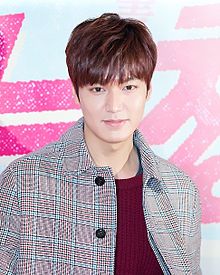Kkonminam
Kkonminam (Korean: 꽃미남; Hanja: 꽃美男; listenⓘ kkot/n [꽃] = flower, minam [미남] = handsome man) has been commonly used in South Korea since the late-1990s to refer to men who are especially concerned with personal style, grooming and fashion.
[3] The emergence of kkonminam was a socio-cultural phenomenon associated with the influence of Mandatory Military Service (strong and tall physical appeal) and Japanese entertainment's androgyny such as manga, dramas, beauty products and music (particularly visual-kei rock bands like X Japan and L'Arc-en-Ciel) in the 1990s.
Even though Japanese popular culture was officially banned before 1998, Koreans gathered information in a variety of ways, mainly through underground personalized human networks, the internet, trips to Japan and piracy.
[11][better source needed] In the late 1990s, Kkonminam images became notable in the Korean entertainment industry, glorifying "pretty" boys with smooth, fair skin, silky hair, and a feminine manner.
[12][better source needed] In 2009, a Korean television series called Boys over Flowers (based on Japanese shojo manga Hana Yori Dango) gained popularity in South Korea and across Asia.
An increasing number of South Korean males began applying cosmetics, wearing preppy and cruise-like outfits and sporting traditionally feminine looks, colors, and prints".
[13] Crystal S. Anderson, a Cultural Studies research scholar at Longwood University, found a variety of ways in which global fans refer to the unique masculinity of male K-pop groups.

